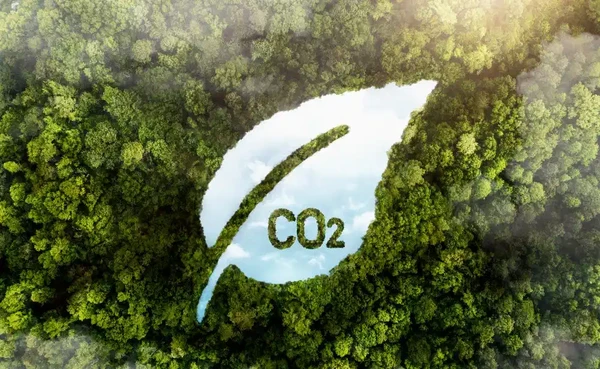Many traders and, even more so, traders place a very strong emphasis on technical analysis to identify moments of price protection. Mathematics, because technical analysis is based on it, is a powerful tool, but reducing decisions solely to statistical analysis can be insufficient without a well-conducted fundamental analysis.

Fundamental analysis - How to use to decide whether to buy electricity or gas.
Today we will provide examples of the elements of fundamental analysis that are worth using to assess the current situation and possible trends when purchasing electricity or natural gas.
What is fundamental analysis in the energy commodities market and energy itself?
It is the process of assessing the value and future prices of commodities based on economic, political, social and environmental factors that may affect the supply and demand for a commodity. It encompasses a broad spectrum of analysis that helps investors understand what factors may influence commodity prices. Key elements of fundamental analysis in the commodities market include:
- Supply:
- Production: Analysis of raw material extraction data, as well as analysis of production regions and major producers.
- Stocks: Assessment of raw material stock levels, which can serve as a buffer for changes in production or demand.
- Climate and seasonality: Climatic factors, weather conditions that can affect the extraction of raw materials.
- Demand:
- Global consumption: analysis of global demand for raw materials, including demand from key economic sectors such as industry, energy, agriculture and technology.
- Changes in technology: Technological innovations that can change the way raw materials are used, leading to an increase or decrease in demand.
- Economic trends: General trends in the global economy, including economic growth, infrastructure development and demographic changes that may affect demand.
- Geopolitics and regulation:
- International politics: The impact of geopolitical events such as conflicts, sanctions, trade agreements and government policies on the supply and demand of raw materials.
- Regulation: Analysis of government regulation of the extraction, production, transport and trade of raw materials that may affect the market.
- Production costs:
- Mining and production costs: Analysis of the costs associated with the extraction, production and transport of raw materials, which can affect producers' profitability and market prices.
- Production technologies: Changes in mining and production technologies that may affect costs and efficiency.
- Macroeconomics:
- Interest rates and inflation: analysing the impact of monetary policy and interest rates on commodity prices, especially commodities used as a hedge against inflation (e.g. gold).
- Exchange rates: The impact of exchange rate movements on trade in raw materials, which are often priced in US dollars.
Fundamental analysis helps you to understand what factors may influence future prices and allows you to make more informed decisions.
Here are examples of factors that may be important for making purchasing decisions regarding electricity or gas.
Energy mix
In order to determine the correct weighting of the energy mix in a given market, it is useful to realise which energy sources dominate electricity generation and how they are diversified. The energy mix is a combination of different energy sources, such as fossil fuels (coal, oil, natural gas), renewable energy sources (solar, wind, hydro, biomass) and nuclear energy, which are used to generate electricity.
As can be seen from the data from the European Union, the situation varies quite considerably between Member States. Each country in the EU has a unique energy mix that depends on available natural resources, energy policy, infrastructure and sustainability goals. Here are some examples that illustrate this diversity:
- Germany:
- Germany has a diverse energy mix, with a high proportion of renewable energy, especially wind and solar power. The country is also a significant producer of lignite energy, but is gradually moving away from coal and nuclear power, in line with its Energiewende (energy transition) policy.
- France:
- France is known for the large share of nuclear energy in its energy mix, which accounts for the majority of its electricity production. Nuclear energy allows France to have low CO2 emissions compared to countries relying on fossil fuels.
- Poland:
- Poland relies mainly on hard coal and lignite, resulting in the country having one of the highest CO2 emissions in the EU. However, Poland is trying to increase the share of renewable energy in its energy mix.
- Spain:
- Spain has a significant share of renewable energy, especially wind and solar power, in its energy mix. The country is investing heavily in renewable energy sources in pursuit of emissions reduction and sustainability.
- Sweden:
- Sweden has one of the most sustainable energy mixes, with a large share of hydropower, nuclear and biomass. The country also has ambitious targets for increasing the share of renewable energy.
The diversity of energy mixes across EU countries influences decisions on energy policy, infrastructure investment and environmental initiatives. Understanding each country's energy mix is crucial for determining the right energy strategy, investments and for assessing the risks and benefits of different energy sources. In addition, the diversity of energy mixes reflects local geographical, economic and political conditions that shape approaches to energy production and consumption.
Coal in Poland's energy mix
Any changes concerning coal will be important for Poland. Given the significant share of fossil fuels in the energy mix, we should also keep an eye on information on the price of CO2 emission allowances, as they may significantly affect electricity prices in Poland.
Poland has for many years based its energy sector on hard coal and lignite, which form a significant part of the country's energy mix. Consequently, any changes in coal policy, such as emission regulations, mining restrictions, technological changes or investment decisions, can have a direct impact on the country's energy and economic stability.
SUPPLY - WEATHER
Weather conditions are one of the key factors influencing pricing in the energy market. Given the significant growth in renewable capacity, data not only on temperature, but also windiness and day length will be important. Water status is also an important aspect, especially for markets with a large share of coal or nuclear units in the power mix. These 'large' technologies require water cooling, so during periods of drought there can be problems with cooling, which can lead to capacity constraints and reduced energy supply.
The high temperatures we are currently experiencing in Europe or Continental Asia are reducing the capacity of transmission systems, which can also affect supply-side risks. When analysing the situation with regard to the availability of gas or coal, it is worth keeping an eye on weather conditions in different regions of the world. During hurricane season in the North American region, there can be severe restrictions on both the production and transport of gas in liquefied form.
Another example would be heavy rains in Australia, which can lead to periodic disruptions in coal mining and transport. Tracking weather conditions in key areas of the world is therefore essential to assess potential disruptions to energy commodity supplies and their impact on energy market prices.
SUPPLY - STOCKS
In the European Union, all Member States are obliged to fill their gas stocks to 90% before the start of the next winter season. It is important to monitor the current levels of gas stocks and the rate at which they are being filled to ensure stability of supply and to avoid potential shortages during periods of increased demand.
Monitoring of gas stock levels
Gas stock levels are monitored on an ongoing basis by the relevant institutions and agencies, which publish regular reports on them. It is crucial that EU Member States achieve the required level of stocks before winter in order to minimise the risk of shortages and related economic and social problems. The rate at which gas storage facilities are filled depends on several factors, such as:
- Raw material availability: Gas supply from various sources, including pipelines and LNG terminals.
- Energy policy: Government decisions and regulations on the management of gas stocks and imports.
- Weather conditions: The impact of seasonal temperature changes on gas consumption and storability.
Carbon stocks
Coal stocks at key ports in Europe and within Poland are also a key element of the energy strategy. Storing coal in adequate quantities is important for:
- Energy security: Maintaining continuity of energy supply, especially in emergency situations.
- Market stabilisation: Preventing coal price spikes during periods of high demand.
- Support for industry: Provision of raw material for the power and heating industry.
Importance of stock monitoring
Regular monitoring of gas and coal stock levels allows potential problems to be detected early and preventive action to be taken. This information is crucial for policy makers, energy companies and consumers, who need to make informed decisions on resource management and long-term planning.
Nowadays, when energy markets are exposed to numerous variables such as geopolitical conflicts, climate change and the energy transition, proper management of energy stocks becomes even more important.
SUPPLY - PRODUCTION
Stock levels will be influenced by the situation o f major producers. For the coal market, for example, the export situation in Australia could prove crucial:Stock levels will be influenced by the situation o f major producers. For the coal market, for example, the export situation in Australia could prove crucial:
Australia is one of the world's largest coal exporters and a key partner for the Asian market. Any problems with the extraction and transportation of this raw material from Australia could reverberate around the world.
The number of active production wells in the USA is also interesting information from which we can draw conclusions about the future availability of this fuel.
DEMAND
What is the current demand for key energy commodities in key markets around the world?
China is both the largest producer and the largest importer and consumer of coal. We should check regularly how stocks of this raw material are changing and how mining and imports are developing.
Is there an increased energy demand at any given time compared to similar periods in the past?
The development of electricity demand in Europe's largest economy, Germany, can also give us a hint as to whether the economy is growing or in recession:
GEOPOLITICS AND REGULATION
The unstable situation in the Middle East has been a significant risk factor for energy markets in recent months. The war between Hamas and Israel in the Gaza Strip has led to an increase in attacks by the Huti tribes in the Red Sea and even the Mediterranean. As a result, the fleet of tankers and bulk carriers delivering raw materials and commodities to Europe from the Asia-Pacific region is taking a circuitous route around Africa, which in turn lengthens delivery times and increases transport costs.
The war in Ukraine, which has been ongoing for more than 2 years, is also an important risk factor for energy markets. Over the past 2 years, the geopolitical situation caused by Russia has dramatically changed the approach to ensuring energy stability in Europe.
The recent Eu Parliamentary elections have also significantly altered the quotation of CO2 allowances. A significant increase in the number of MEPs from Eurosceptic groups could lead to a reduction in the rate of change associated with emissions reductions.
PRODUCTION AND EXTRACTION COSTS
Over the past few years, we have become accustomed to the significant presence of the United States in the gas, oil and coal export market. However, building such a strong position would not have been possible without innovations whose development and implementation spans the last 25 years. By developing technologies for the commercial extraction of shale gas and oil, the US has not only joined the ranks of exporters, but has also become a leader in supplying Europe, among others.
MACROECONOMICS
The condition of the global economy with regard to the main markets is also an important issue from a purchasing point of view.
The Purchasing Managers' Index (PMI) is an economic indicator that measures activity in a country's industrial sector, among other things. It is a tool used to assess the health of the economy and is one of the key indicators:
Inflation data can also help to assess the health of economies:
FUNDAMENTAL ANALYSIS IN THE PURCHASE OF ELECTRICITY AND GAS - SUMMARY
Fundamental analysis is a key tool that can significantly aid the decision-making process for buying electricity and gas. Unlike technical analysis, which is mainly based on mathematics and statistics, fundamental analysis provides a deeper understanding of the various factors affecting the energy market. Using elements such as supply, demand, geopolitics, regulation, production costs and macroeconomics, we can better predict trends and make more informed purchasing decisions.
Knowing the energy mix, monitoring commodity stocks, analysing weather conditions and keeping up to date with geopolitical events allows for a better understanding of market dynamics and minimising risks. In this day and age, when energy markets are exposed to numerous variables, the ability to manage resources effectively becomes even more important.
When making decisions on the purchase of electricity or gas, it is therefore advisable to make use of the wide range of information and analytical tools available. This is the only way to ensure stability and energy security in the long term, as well as to optimise costs and operational efficiency. Fundamental analysis, alongside technical analysis, should become an integral part of purchasing strategies in the energy market.



